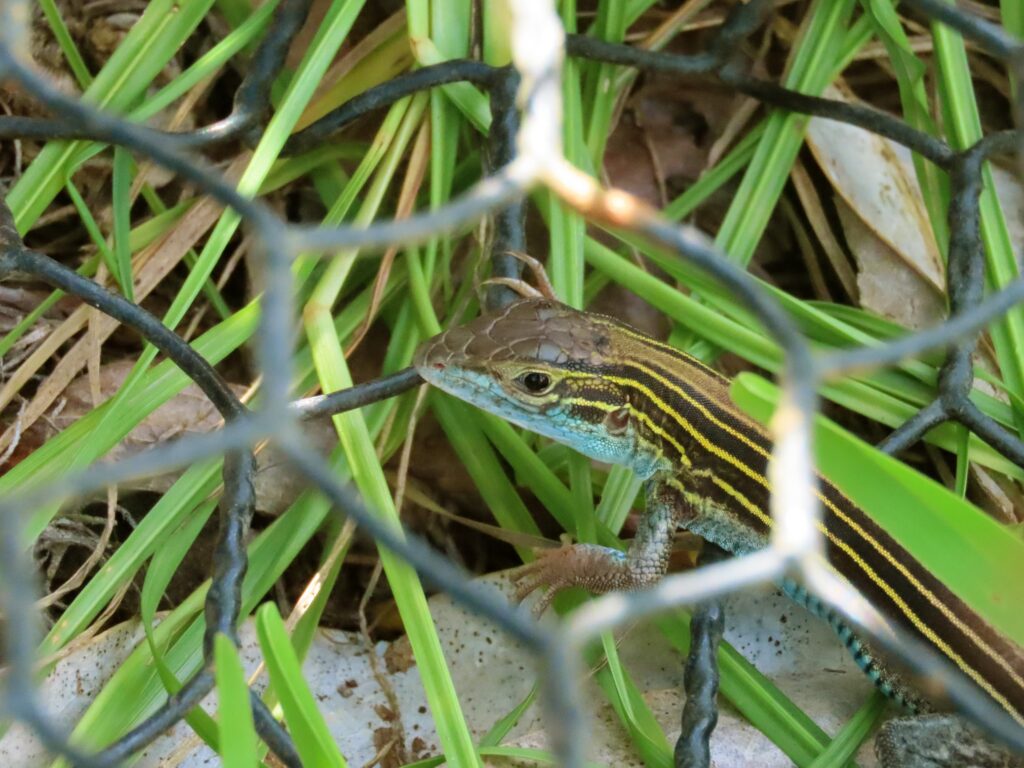



This week for Flora and Fauna Friday we have the striped speedster of the sand barrens, the Six-lined Racerunner (Aspidoscelis sexlineatus).
The Six-lined Racerunner is a species of lizard common on the hot dry sands of Edisto Island. They love heat and relish in the dog days of summer. You’ll never find them in the lowlands of the island but they flee in droves upon our sandy hills. They’re long and somewhat slender with short legs and extended toes. Their back is charcoal-black with a central gray-brown stripe. Their body is flanked by six lemon-yellow lines, three per side, that flow behind the eye and bleed into the tail. The male’s throat and belly are washed in turquoise that flashes at that eye as he blinks across pale sands. The species has a jittery appearance. Moving in rapid, jerking movements. These tweaky telltale signs betray their most novel quality.
Racerunners are quick little things. They explode from their footings at the slightest provocation. Their long toes anchor into the soft sands and propel our reptile elsewhere in the blink of an eye. Their primary predators are the Southern Black Racer (Coluber constrictor priapus), the Loggerhead Shrike (Lanius ludovicianus), and the American Kestrel (Falco sparverius). Their speed is both defense and offense, moving them out of harm’s way and launching them into prey the same way. Six-lined Racerunners eat insects. They most often forage casually under leaves and logs for little critters but can utilize their quickness for high-speed snacking when the opportunity presents itself. Also, they don’t shed their tails like most of our other lizards. They need it as a counterbalance while sprinting. Leaving it behind would be a death sentence.
Six-lined Racerunners maintain an extremely high body temperature during the day, typically above 100°F. Normal reptiles have a low core temperature which slows their metabolism and saves calories. Racerunners exploit the heat of summer to drive their metabolism to mammal-like levels. This grants them the gift of continuous acceleration. Many reptiles can produce explosive speed on demand but it comes at the cost of extended exhaustion. Their sluggish metabolisms takes forever to recharge the energy stores they burned. Racerunners worked around this and can run for longer distances with shorter rests in between. Meaning they can save energy like a reptile at night or during winter but can move like a rabbit in the heat of the day.